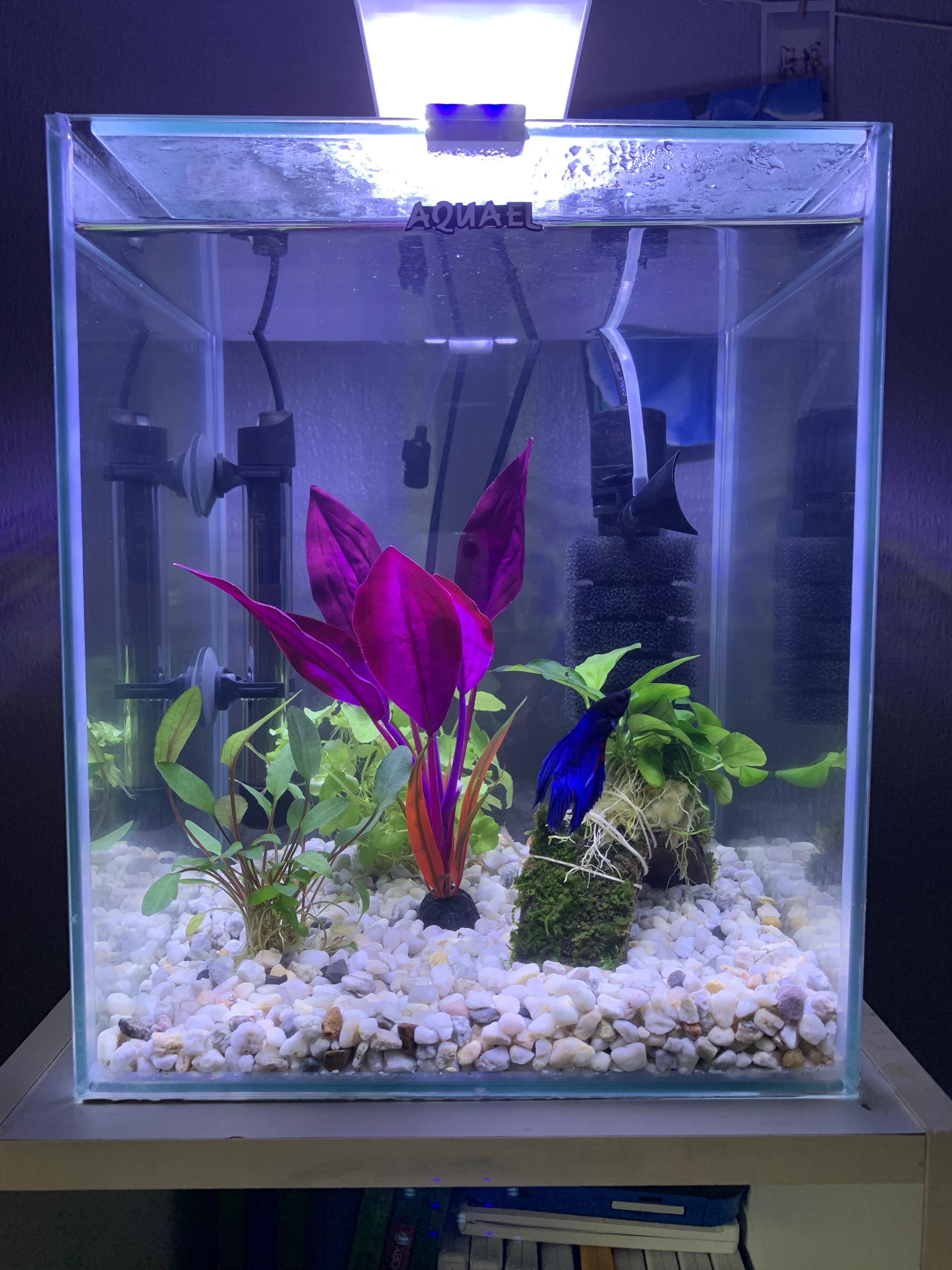Maxwell Adams is a veterinarian specializing in aquatic pets. His medical expertise and compassionate approach to pet care make his articles a valuable resource for Betta Fisher's readers.
The most beneficial addition to a betta fish tank is live plants. They contribute to improving the water quality, providing hiding spots, and mimicking the betta fish's natural habitat.
Live plants in a betta fish tank absorb harmful toxins, produce oxygen, and reduce algae growth. They also create an environment for beneficial bacteria to thrive, aiding in the nitrogen cycle.
There are different types of live plants suitable for betta fish tanks, including Java Fern, Anubias, and Amazon Sword. Each plant has specific light requirements and care instructions.
If you're wondering how to introduce live plants into your betta fish tank, here's a brief step-by-step guide: clean the plants, acclimate them to the tank water, and use proper planting techniques. For more detailed instructions, check out our comprehensive guide on Koi Betta care.
For a visual guide, check out our video tutorial on planting live plants in a betta fish tank. You can also explore the colorful world of Betta Fish to understand their habitat better.
Why Live Plants Are a Game-Changer for Your Betta Fish Tank 🌿
When selecting the best plants for your betta fish tank, consider options like Java Fern, Anubias, and Amazon Sword. Each plant has unique light requirements and care instructions. Make sure to choose those that suit your tank setup. For more guidance, check out our comprehensive guide on choosing the perfect plants for your Betta fish tank.
Introducing live plants into your betta fish tank is straightforward. Clean the plants, acclimate them to the tank water, and plant them correctly. This step-by-step guide ensures a smooth transition for your plants and a healthy environment for your betta fish.

For a visual guide on planting live plants in a betta fish tank, check out the video tutorial below:
Choosing the Perfect Green Roommates: Top Plants for Your Betta's Home 🐠🌱
Top Live Plants for Your Betta Fish Tank
- Java Fern: This is a hardy plant that thrives in low to medium light conditions. It's an excellent choice for betta fish tanks as it doesn't require substrate to grow. Simply attach it to a piece of driftwood or a rock. Java Fern provides a great hiding spot for your betta and helps improve the water quality.
- Anubias: Anubias is a low-maintenance plant that prefers low to medium light. It's great for beginners and can be tied to a decoration or planted in the substrate. Its broad leaves provide a perfect resting spot for your betta fish. Remember to keep the rhizome above the substrate to prevent it from rotting.
- Amazon Sword: This plant can grow quite large, making it a beautiful centerpiece for your betta fish tank. It requires medium to high light and a nutrient-rich substrate. The Amazon Sword is known for its tall, broad leaves, which your betta will love to swim through and hide in. Regular fertilization will help this plant thrive.
Green Thumb Guide: Introducing Live Plants to Your Betta's Habitat 🌱💦
Live plants are a great addition to a betta fish tank. They enhance water quality, offer hiding spots, and replicate the betta's natural surroundings. But, how do you add live plants to your betta fish tank? Here's a simple guide:
1. Clean the plants: Give the plants a good rinse to get rid of dirt or debris. Remove any damaged or rotting leaves.
2. Acclimate the plants: Put the plants in a container with tank water. Allow them to sit for around 15 minutes to get used to the temperature.
3. Planting techniques: Carefully insert the plant's roots into the substrate, ensuring they're firmly planted. Be careful not to bury the plant's crown or stem.
To provide a more visual guide, we've included a detailed video tutorial on how to introduce live plants into your betta fish tank.
After watching the video, you should have a clear understanding of how to properly introduce live plants into your betta fish tank. Remember, the key is to be patient and take your time to ensure the best results for your betta's new environment.















